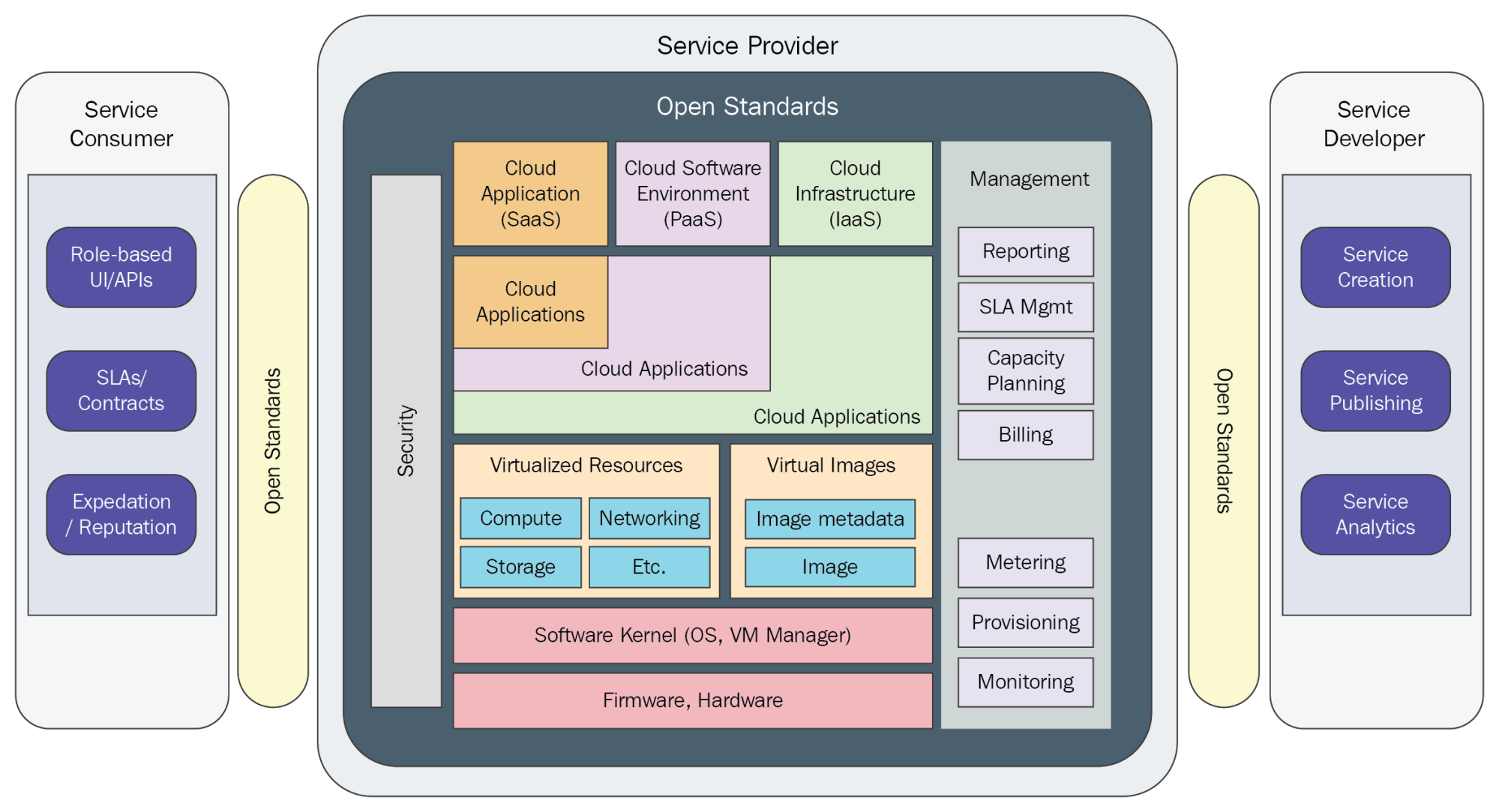Cloud computing taxonomy
The cloud computing taxonomy was initially developed by the United States National Institute of Standards and Technology (NIST) as a tool for standardizing conversations around cloud architectures. Since then, this basic model has been enhanced by the community and broadly adopted to discuss basic concepts. The major taxonomy components are described here:

The service consumer is the entity (enterprise or end user) that actually uses the cloud service. Users will normally have multiple programming interfaces. These interfaces present themselves like any normal application and the user does not need to understand any cloud computing platform details. User interfaces can also provide administrative functions like virtual machine or storage management.
The cloud service provider (CSP) creates, manages, and delivers information technology services to the service consumer. Provider tasks vary based on the service model:
- For SaaS, the provider installs, manages, and maintains all software. Service consumers only have access to the application.
- For PaaS, the provider manages and provides a standardized application development environment. This is typically in the form of a development language framework.
- For IaaS, the provider maintains and operates the facilities, hardware, virtual machines, storage, and network associated with the delivery of any information technology service. The service consumer, however, is responsible for service design, operations, and delivery.
Critical to the service provider's operations is the management layer. This layer meters and monitors the use of all services. It also provisions and deprovisions services based on user demand and service provider capacity. Management also includes billing, capacity planning, SLA management, and reporting. Security is applied across all aspects of the service provider's operations.
The service developer creates, publishes, and monitors cloud services. Typically, these consist of line-of-business applications delivered directly to end users. During service creation, analytics is used for remote debugging and service testing. When the service is published, analytics is also used to monitor service performance.
Standards and taxonomies will affect cloud use case scenarios in four different ways:
- Within each type of cloud service
- Across the different types of cloud services
- Between the enterprise and the cloud
- Within the private cloud of an enterprise
Within each type of cloud service (IaaS, PaaS, or SaaS), open standards help organizations avoid vendor lock-in by giving users the freedom to move to other cloud service providers without major application or operational modifications. Standards within an enterprise are normally driven by interoperability, auditability, security, and management requirements.




































































